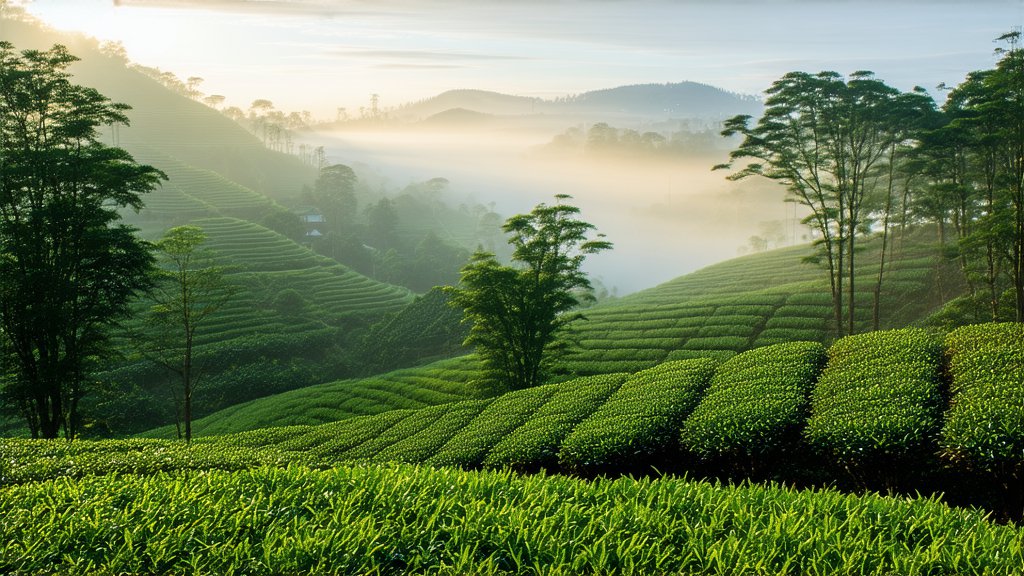
In the vast and diverse landscape of Chinese tea culture, Keemun black tea stands as a testament to the rich history and intricate artistry that defines this ancient beverage. Originating from Qimen County in Anhui Province, Keemun tea has earned international acclaim for its distinctive flavor profile and meticulous production process. This article delves into the captivating journey of Keemun black tea, exploring its historical roots, varieties, craftsmanship, and the art of its appreciation.
A Glimpse into History
Keemun black tea traces its origins back to the Tang Dynasty (618-907 AD), when tea was first cultivated in the Anhui region. However, it wasn't until the late 19th century that Keemun gained prominence on the global stage. During this period, the British East India Company introduced Chinese tea to Europe, sparking a fascination with its unique flavors. Among these, Keemun tea, known for its smoky aroma and smooth taste, quickly became a favorite among tea connoisseurs.
Varieties of Keemun Black Tea
Keemun black tea is primarily categorized into two main types based on its processing method and flavor characteristics:
-
Smoky Keemun: This variety undergoes a traditional smoking process over pinewood fires, imparting a distinct smoky aroma and flavor. It is often referred to as "Lapsang Souchong" in the Western world.
-
Non-Smoky Keemun: While less common than its smoky counterpart, non-smoky Keemun retains a more delicate and nuanced flavor profile without the influence of smoke. It showcases the pure essence of the tea leaves themselves.
The Art of Craftsmanship
The production of Keemun black tea is a labor-intensive process that requires skill and precision. Here's an overview of the key steps involved:
-
Harvesting: Tea leaves are handpicked during specific seasons, typically in spring and autumn when the climate conditions are ideal for optimal growth.
-
Withering: Freshly picked leaves are spread out in a well-ventilated area to lose moisture and become softer. This process can take several hours.
-
Rolling and Oxidation: The withered leaves are then rolled to release their juices, which facilitates oxidation—a crucial step where polyphenols convert into theaflavins and thearubigins, contributing to the tea's color and flavor.
-
Smoking (for Smoky Keemun): For the smoky variant, the rolled leaves are exposed to pinewood smoke in a controlled environment. This step imbues the tea with its characteristic smoky aroma.
-
Drying and Sorting: After oxidation or smoking, the leaves are dried to further reduce moisture content. Finally, they are sorted by size and grade to ensure consistency in quality.
The Ritual of Tea Tasting
To truly appreciate Keemun black tea, one must engage in the traditional tea tasting ritual, which involves several stages:
-
Warming the Teapot: Begin by rinsing the teapot with hot water to warm it up and enhance the brewing process.
-
Measuring the Leaves: Use approximately 3 grams of loose leaf tea per cup (about 6 ounces) of hot water. Adjust according to personal preference.
-
Steeping: Pour hot water (around 90-95°C or 194-203°F) over the leaves and let them steep for 3-5 minutes. The exact time may vary depending on the desired strength and flavor intensity.
-
Aroma Appreciation: Before taking the first sip, inhale deeply to savor the aroma. For smoky Keemun, note the pinewood fragrance; for non-smoky, appreciate the subtle floral or fruity notes.
-
Tasting: Take small sips, allowing the tea to coat your palate fully. Pay attention to the balance between sweetness, astringency, and any other flavors present.
-
Observation: Examine the color of the liquor, which should be a deep amber or reddish-brown for Keemun. Also, observe the leaves after infusion; high-quality Keemun will have uniform, glossy leaves with minimal broken pieces.
In conclusion, Keemun black tea offers not just a drink but an experience—a journey through centuries-old traditions, meticulous craftsmanship, and a sensory adventure. Whether you prefer the bold smokiness or the delicate nuances of non-smoky varieties, there's a Keemun tea waiting to enchant your senses and transport you to the misty mountains of Anhui Province. Embrace this remarkable tea, and let it be a bridge connecting past and present, East and West, in every comforting cup.